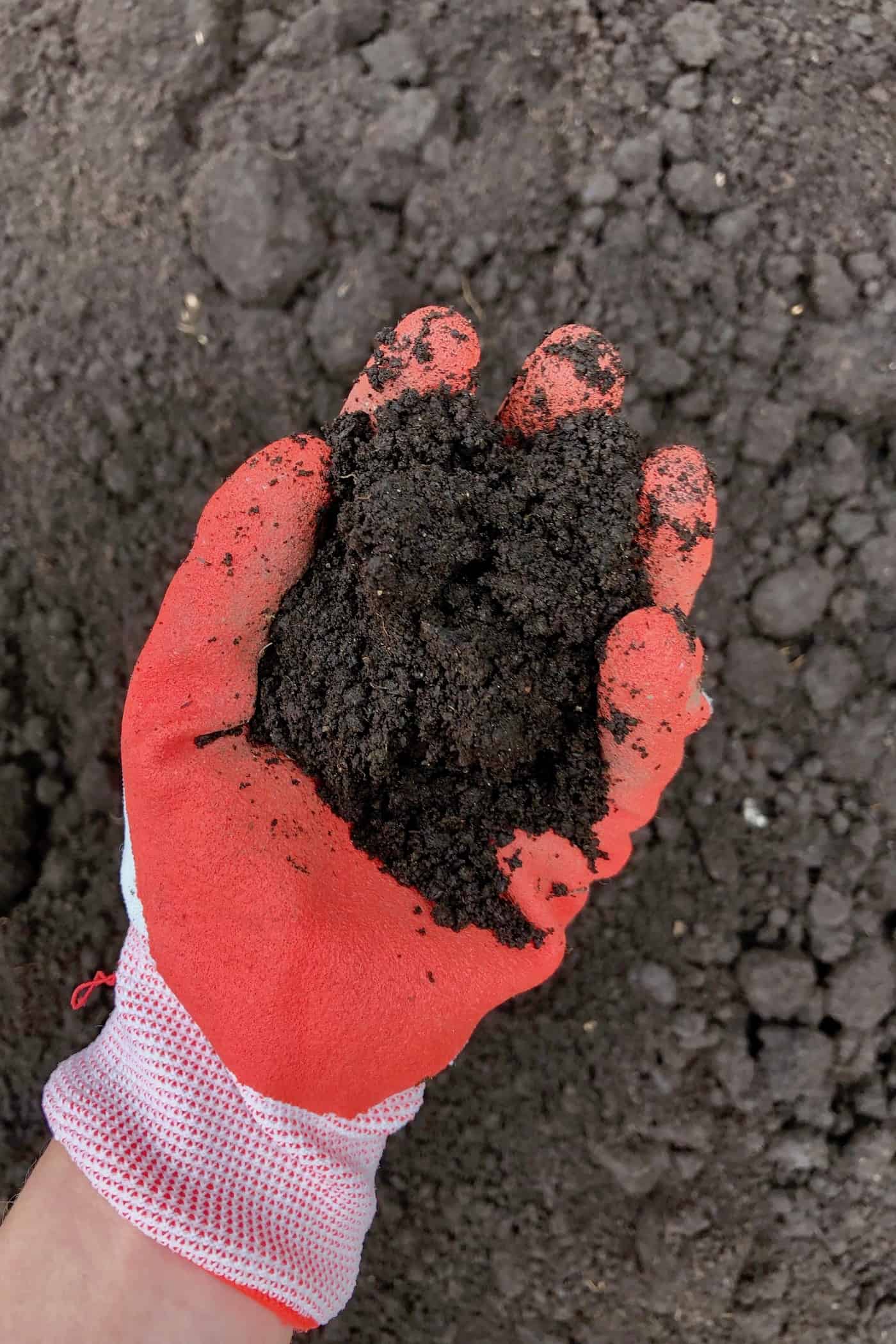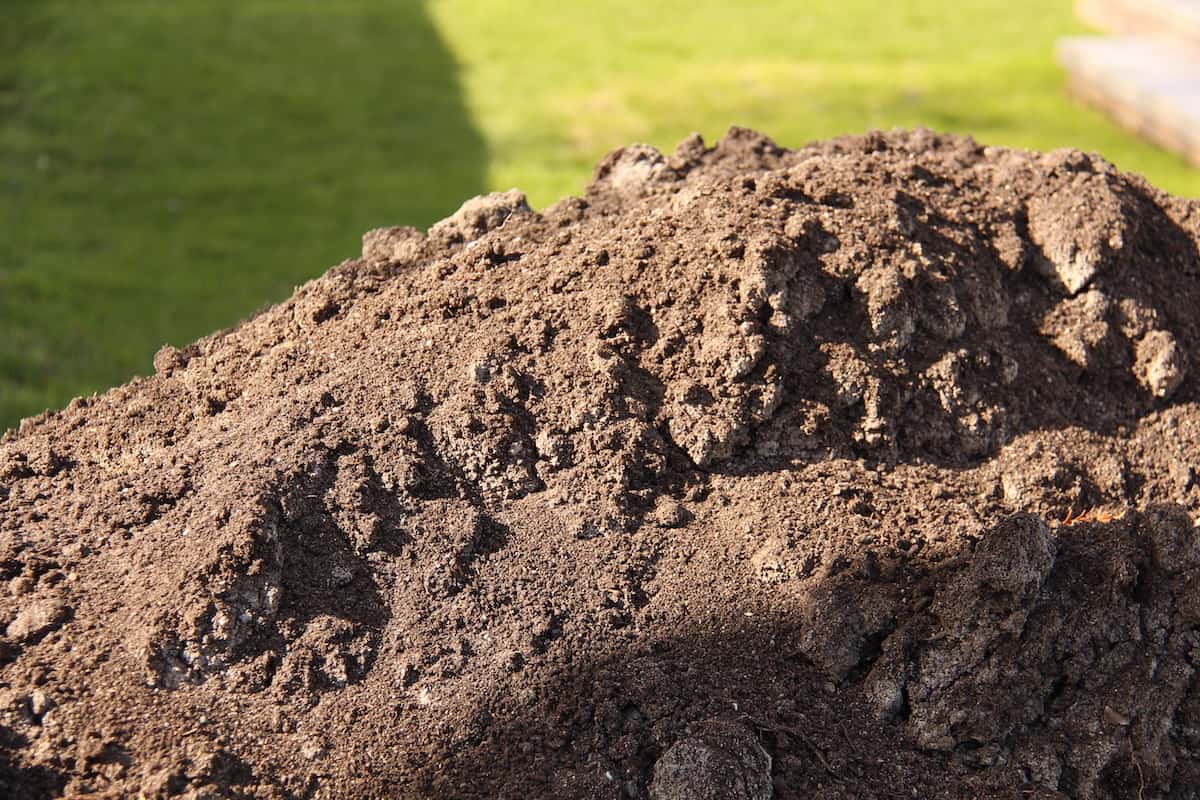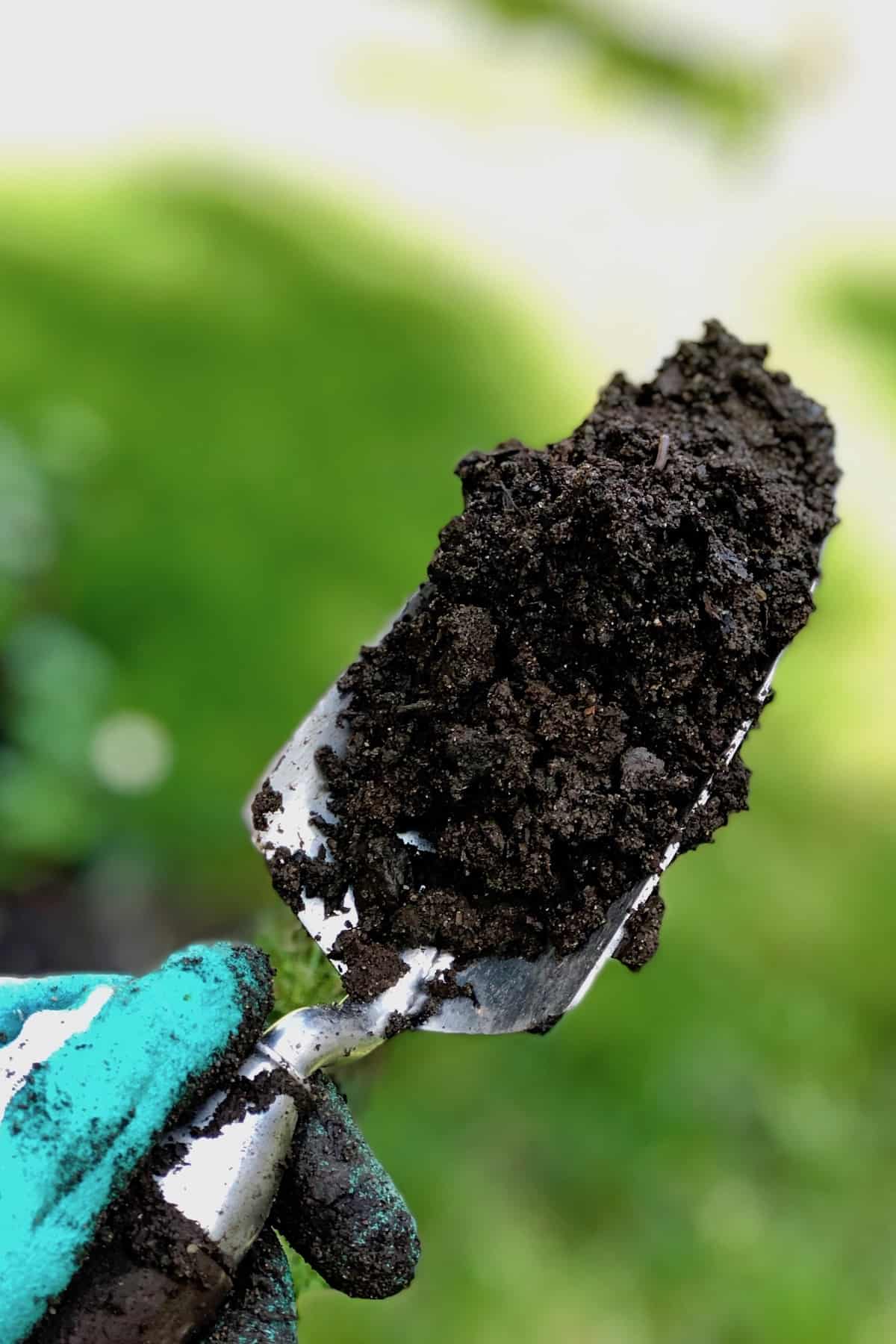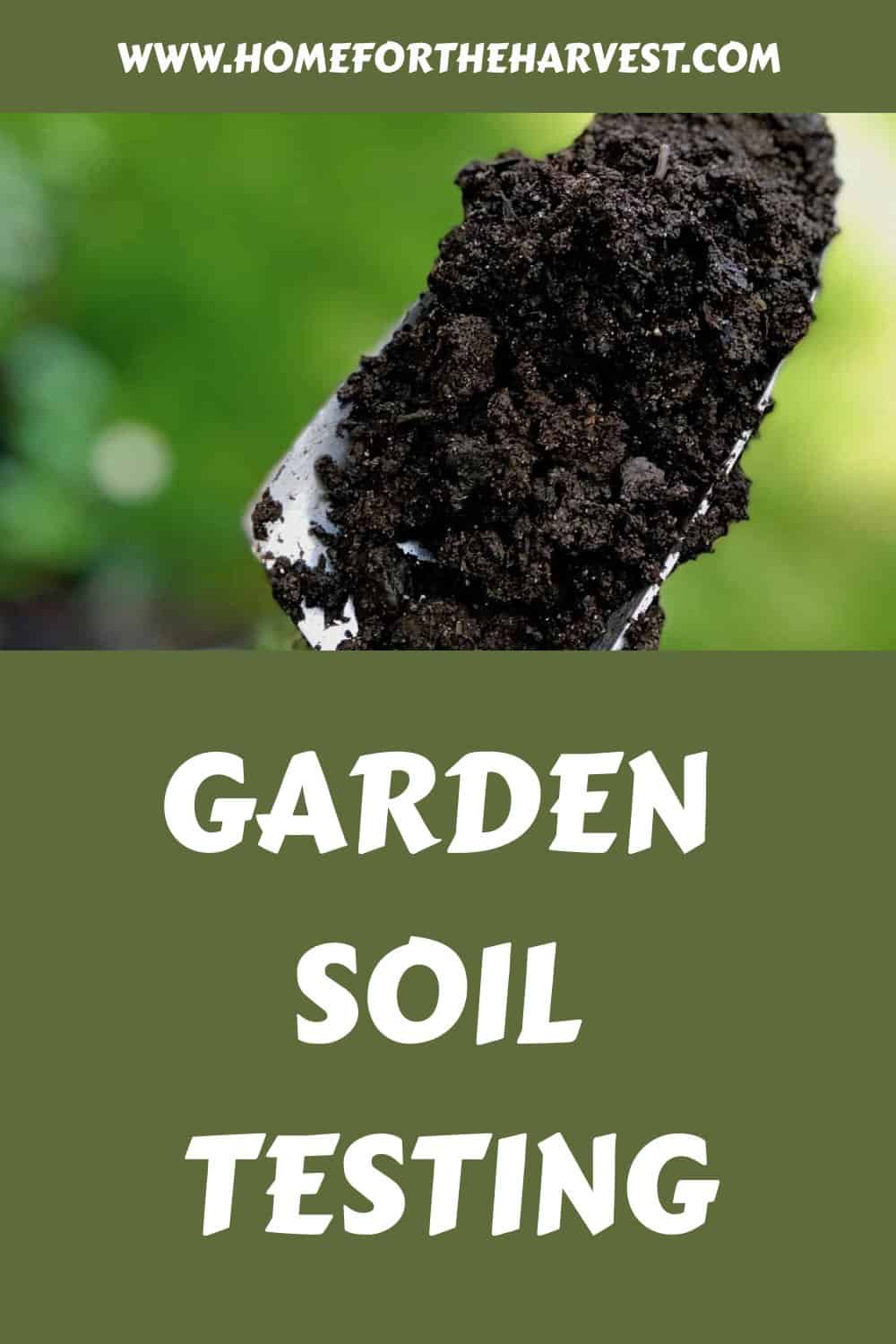Garden soil testing is a type of soil analysis done to collect helpful data, including mineral nutrients, organic matter, and soil pH. Quality testing of a garden soil sample at a proper laboratory will help you understand the composition of your garden soil and also provide recommendations for fertilizer and other soil amendments to improve the soil for its intended purpose.
The easiest way to get a laboratory soil analysis of your garden soil is with a mail-away sample kit like SoilKit or MySoil.
Read on to learn all about soil testing for your garden!

So how do you know what’s in your garden soil? You can go out and grab a handful and look at it. We can watch to see whether or not rainwater tends to pool on top of the soil (or drain away quickly). We can observe what kind of plants tend to grow in the soil. There are lots of qualitative observations that can tell us about the composition of our soil.
“One of the biggest problems for home gardeners is that they are unhappy with their soil. Some gardeners claim to have heavy clay soils, but many of these soils aren’t clay. Instead, these soils have been so heavily compacted that they more closely resemble a roadbed than a planting bed.”
The Science of Gardening from The Great Courses, Course No. 9443, Professor Linda Chalker-Scott, Ph.D., Washington State University
Why get your garden soil tested
Get your garden soil tested so you actually know what’s out there! Do you know the ballpark percentages of sand, silt, and clay in your soil? What about the percentage of organic matter? And what about the pH of the soil, its drainage characteristics, and the available (and potential) nutrients?
My dad always said that it’s better to plant a $1 tree in a $10 hole than the other way around. But why? Let’s look at why spending your money on a soil test is perhaps a more important investment than the actual plants you buy.
Beyond understanding how the soil will support plant life, it’s also prudent to do what you can to ensure the soil is safe for gardening activities. Like anything in our environment, soil and groundwater can become contaminated:
What garden soil tests measure
Garden soil tests generally inspect some or all of the following characteristics:
- Soil Texture (Is it clay-dominated soil, or is it sandy loam?)
- Soil pH (Is the soil acidic, neutral, or alkaline…and how much?)
- Soil Nutrients (phosphate, potassium, calcium, magnesium, and sometimes nitrogen)
- Soil Organic Matter (how much is organics versus mineral particles?)
- Soil Heavy Metals (is the soil contaminated with industrial metals?)
“Soil samples should be taken from several spots on your site and sent to a reputable soil-testing lab, such as those found at agricultural universities. You will discover your soil’s organic matter content, its pH, and levels of essential nutrients including nitrogen, phosphorus, and potassium. It’s also wise to ask for a heavy metal analysis, especially if you will be planting edible natives.”
Gardening with Native Plants of the Pacific Northwest, by Arthur R. Kruckeberg & Linda Chalker-Scott.
Testing for cation exchange capacity (CEC) and soluble salts is also common. Further soil analysis can also be done for other chemicals, including helpful micronutrients or potentially harmful contaminants (asbestos, pesticides, petroleum). In-depth particle size analysis is also available at many soil laboratories for a higher fee (including a particle size distribution chart and placement on the soil texture triangle).
Detailed on-site soil analysis is available but uncommon and includes inspection of soil structure, compaction, percolation, soil life, general plant health, and water table elevation. Testing of plant tissue of plants growing in the soil is also sometimes added to a site investigation plan.
“Nitrogen is absorbed by plants as nitrate (NO3-) and ammonium (NH4+). Soil NO3-and NH4+levels can fluctuate widely with soil and weather conditions over very short periods of time. For this reason, soil nitrogen testing is not generally useful for predicting fertilizer need in our humid environment.”
Interpreting Your Soil Test Results, University of Massachusetts Amherst
How labs test garden soil
Soil testing laboratories test soil in a number of different ways. Many soil analyses involve weighing the sample, looking at it, and/or mixing the soil with a particular chemical solution to see what happens. Labs typically purchase equipment and get certifications for the tests that are in demand in their area. All labs don’t do all kinds of soil tests.
Most agricultural and horticultural labs estimate soil texture by manual inspection instead of running the sample through a detailed particle size distribution test. Particle size distributions are generally reserved for construction applications and are not commonly used for horticultural soils. Manual inspection by an experienced lab technician is generally adequate to classify the soil by texture.
Soil organic matter is generally estimated in the lab by heating the sample. First, the sample is gently “oven-dried” to remove moisture and weighed. Then the sample is heated to the point where the organic matter “burns off”. The sample is weighed again, and the change in weight is calculated. Some labs carry out elemental carbon analysis, but the gear to do this testing is not as common. There are also field tests in which soil is mixed with a reactive substance to estimate SOM based on the visual color comparison.
Elemental nutrients are generally tested by mixing the soil with a reactive chemical solution, although there are many methods.
Soil pH (concentration of hydrogen ions) is often measured in test water and a calcium chloride solution. Soil sample solutions are generally measured using a potentiometer equipped with a pH-sensitive electrode system. Where lower resolution is acceptable, soil pH can be measured with pH-sensitive paper.

What do the results of a garden soil analysis tell me?
The results of a garden soil analysis give you some numbers to complement the visual observations you’ve been making. While your eyes may be able to tell you if your lawn is yellow or green, only a proper soil test can identify something like excessive levels of lead or other heavy metals. On the other hand, a soil test may indicate an extreme pH, but your eyes may tell you that the plants you’ve got are dealing with it just fine on their own.
“Besides indicating nutrient deficiencies, a soil test can also provide information on soil acidity, the percentage of organic matter in your soil, and your soil’s texture. But it will not tell you anything about poor soil drainage, insufficient sunlight, or insects and diseases.”
Soil Testing Is Worth the Effort, by Lee Reich, Fine Gardening Magazine
Many garden soil test reports will include recommendations for improving your soil. It is important to take the time to carefully fill out your lab request forms so you can get the most from this service:
“Recommendations provided with your soil test report are specific to the crop selection that you identified on your soil sample submission form and are based on the analytical results for your sample.”
Interpreting Your Soil Test Results, University of Massachusetts Amherst
You may find that the true drawbacks to your soil are different than you thought they were. For instance, some homeowners who think their “clay soil” is simply too dense for grass learn that their soil is actually a loam that’s been overly compacted. So, both the data from the report and the recommendations can be very helpful for homeowners with lawns and gardens.
“Gardeners may be surprised to hear that clay is crucial for good soil nutrition, so some clay character is desirable.”
Gardening with Native Plants of the Pacific Northwest, by Arthur R. Kruckeberg & Linda Chalker-Scott.
How much does garden soil testing cost?
The overall cost of soil testing depends on the lab’s prices, how many samples you submit, and what kind of soil analyses are requested.
A basic garden soil test at a college soil lab will often test nutrients, pH, and lead for a fee of about $10-$20 per sample. These labs are generally associated with the local agricultural school or horticultural department of a university. Additional testing and more detailed testing from the school lab will incur additional costs. These tests often take about a month to get results.
Soil testing is generally the most expensive at private soil laboratories. A detailed particle size analysis or a nutrient analysis at a private soil lab can cost as much as $100 for a single sample. Check prices and confirm availability prior to choosing the lab and taking soil samples.
“Soil testing for small and medium-sized community gardens, where the site has no unusual features and no past uses of concern, should cost approximately $200 to $500. If there are many issues of concern, there is a chance the cost of your soil test will increase, so be sure to discuss this with the lab.”
Soil and Water Testing Guidelines for Home and Community Gardens, County of Los Angeles Public Health
Why get a lab soil test instead of doing a DIY soil test
Soil testing done at laboratories is held to a higher standard than home test kits. Testing is done at certified labs with the right equipment, following standard testing procedures with your soil sample. Technicians are experienced in testing many different soil types, and the lab should have various quality control standards in place.
Laboratory testing methods generally offer a much higher level of accuracy and precision than home test kits are able to provide. The reliability of quality lab tests is one of the main reasons they remain so popular. Soil test kits sold at garden centers are also quite limited in the characteristics they can inspect and generally don’t test for heavy metals or other contaminants.
Where to send garden soil samples for testing
In the USA, your local cooperative extension service can point you toward the best place to get your garden soil tested. Some post-secondary schools have soil analysis laboratories that offer testing to the general public. There are also a host of private laboratory companies that offer garden soil testing.
Perhaps the most reliable and easy-to-use laboratory soil testing kits are available from SoilKit and MySoil. These companies offer at-home soil collection kits so gardeners can collect their own soil and send it off to a soil laboratory for testing. The kits usually come with a soil sample bag, postage-paid mailer, pre-paid lab fees, and an instruction card.
Garden soil testing at post-secondary schools
Here are some educational institutions that offer soil testing services for home gardeners:
- University of Massachusetts (Amherst, Massachusetts)
- Pennsylvania State University (University Park, Pennsylvania)
- Cornell University (Ithaca, New York)
“I’ve always advised gardeners to have a soil test done whenever they embark on a new garden or landscape project, so before I added anything to my raised beds I took samples and sent them to the soil testing lab at University of Massachusetts at Amherst (my go-to lab as there are no longer any university labs in Washington State for the public to use).”
Why soil tests matter: lessons from my vegetable garden, by Dr. Linda Chalker-Scott
Private soil testing laboratories for garden soil
There are also lots of private labs that can test your garden soil. Here are a few examples of private soil testing labs:
- Peaceful Valley Farm and Garden Supply (Nevada City, California)
- Midwest Laboratories (Omaha, Nebraska)
- A&L Western Laboratories (Modesto, California)
- Waypoint Analytical (California)
- Wallace Laboratories, (L.A., California)
- Sunland Analytical (Rancho Cordova, California)
- Waters Agricultural Laboratories (Camilla, Georgia)
- Woods End Laboratories (Kennebec County, Maine)
In the USA, your local cooperative extension office can point you towards soil testing services in your area (or recommend where to mail your sample).
Before you get your soil tested
Contact the laboratory you’ve chosen prior to sending soil samples. Get a written quote for the testing if prices are not clearly listed. Also, ask for information on turnaround time, sampling procedures, and sample drop-off or delivery. You may also be able to pre-fill out the request forms and even schedule a time slot with the lab.

Sampling your garden soil for soil analysis
Sampling is of key importance. Confirm a laboratory for testing before you take the sample, as each lab generally has its own specific instructions for sampling. Most labs won’t accept overly-wet samples, poorly-labeled samples, or samples with other quality concerns. Also, consult a general soil sampling guide from a reputable source, such as this soil sampling guide from the University of Oregon.
“The soil-test report will make recommendations for the next growing season, so test soil several months before planting or fertilizing. For a cool season lawn, submit samples the previous summer; for a warm-season lawn, submit samples in the fall or winter. For a spring vegetable garden or flower bed, submit a sample in the fall or winter.”
A Gardener’s Guide to Soil Testing, North Carolina State University
Educational resources for garden soil testing
Here are some helpful resources for further information on garden soil testing:
- Guide for Soil Testing in Urban Areas (Toronto Public Health)
- Soils in Urban Agriculture (University of California)
- A Gardener’s Guide to Soil Testing (North Carolina State University)
- Interpreting Your Soil Test Results (University of Massachusetts)






